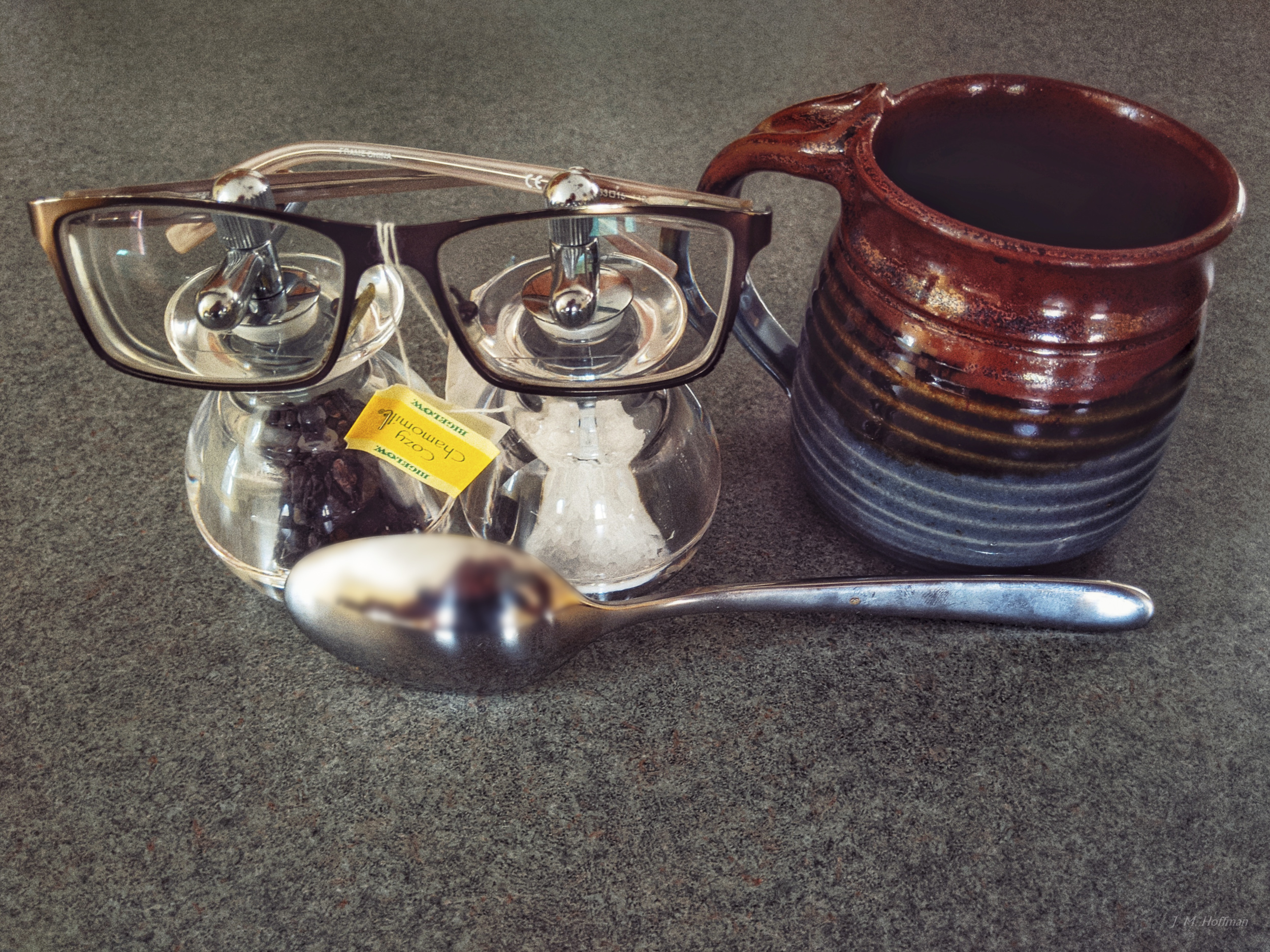Okay, so you can’t leave the house for a while… That doesn’t mean you can’t take pictures! (And if you get one you like, enter it into our free weekly contest.)
Here are five photography suggestions, with examples, to get you started:
- Try a still life
- Find or create a reflection
- Look out the window
- Experiment with depth of field
- Play with post processing
Still Life Photography
Still-life photography started as the natural successor to still-life painting, but it quickly became much more. For instance, look how Russian photographer Victoria Ivanova uses fruit to tell an emotion-laden story:
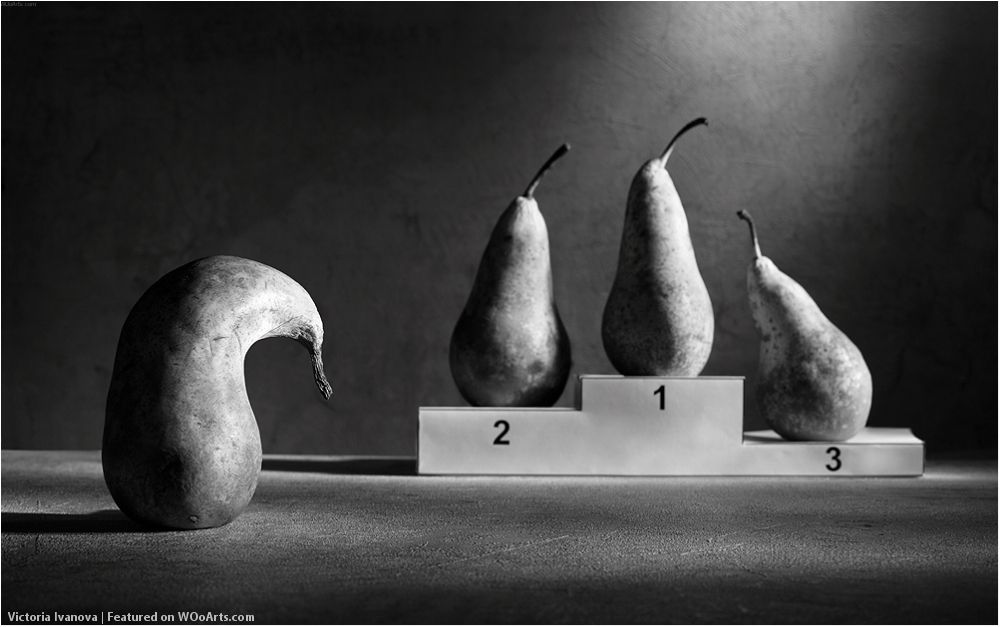
This is my attempt, slightly less polished, but it still gave me great joy (and perhaps some companionship?).

And here’s a less staged shot I took, sort of a sign of the times:
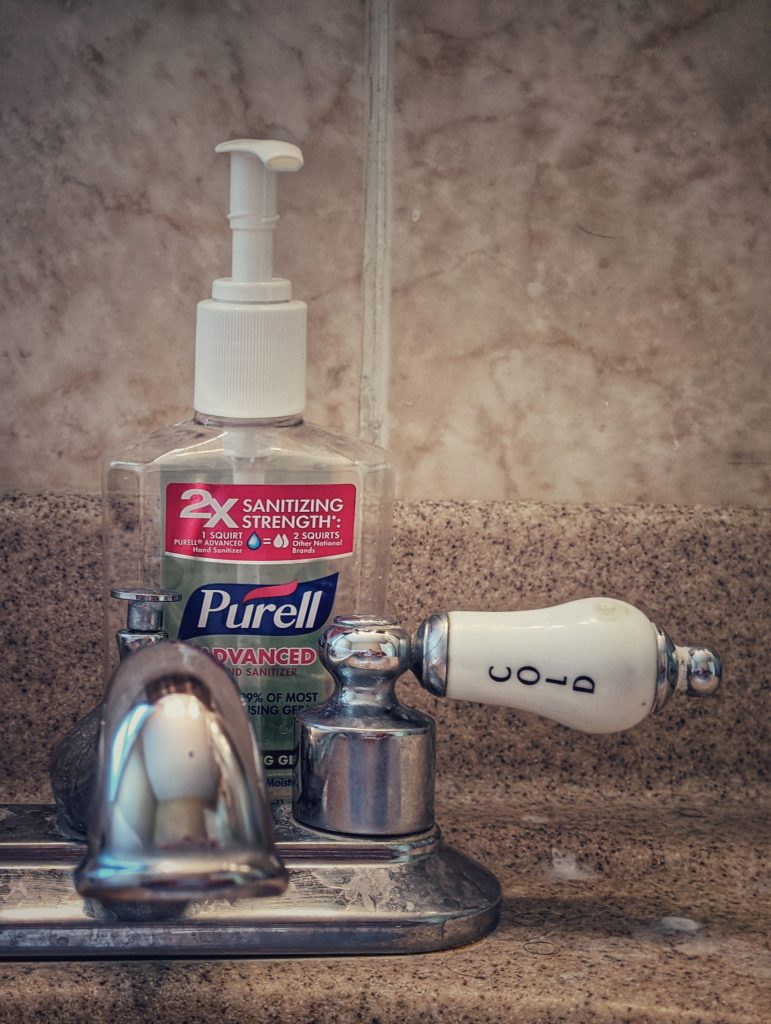
So look around and see what you can find, then build a scene to photograph.
Reflections
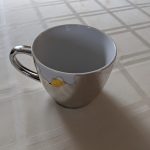
I dug up an old shiny Starbucks mug I got as a gift (similar to these on Amazon), and used it for a new perspective on things:
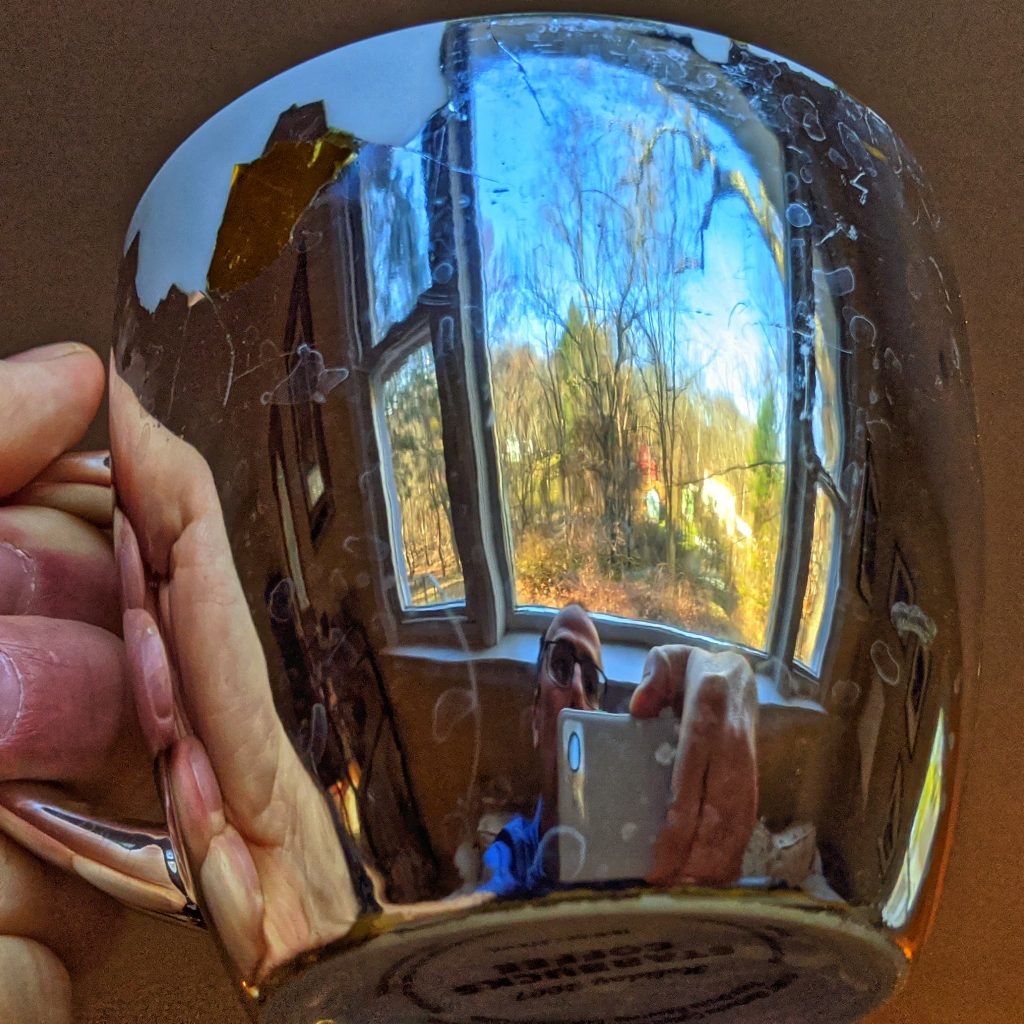
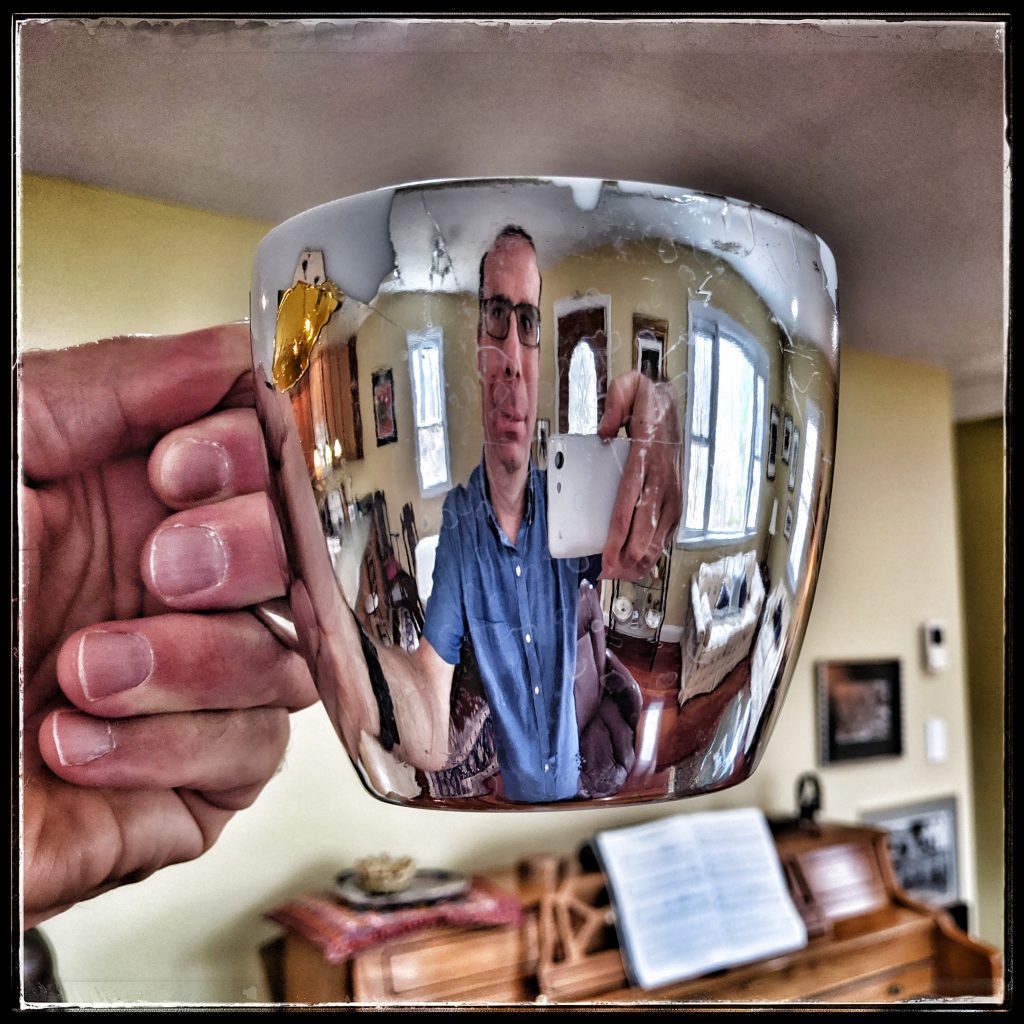
Or if you’re using Zoom, that’s another opportunity to shake things up:
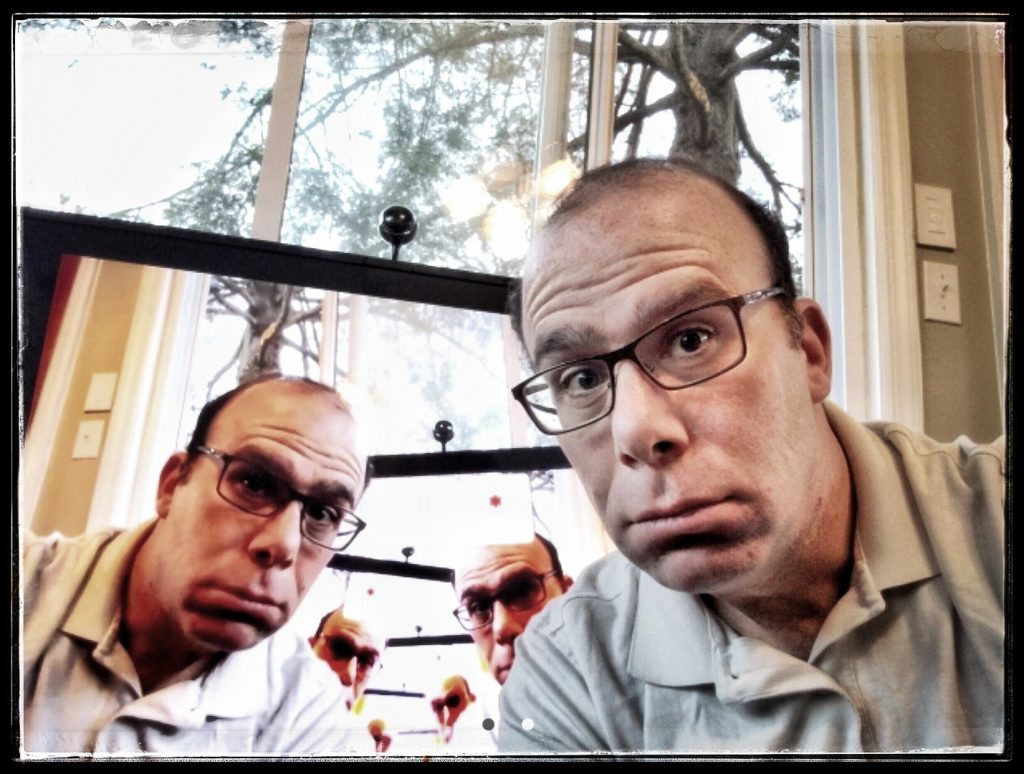
(For more reflections and similar light shenanigans, take a look at this on-line exhibition from a class taught my by friend Yair Gil. I especially like the photo of the guy standing next to his own coat…)
So look for a mirror or a glass or any shiny surface — physical or virtual — and start shooting.
Look out the Window
If you’re stuck at home, half of the story you want to tell is what you see out the window. For me, it’s often the near daily arrival of supplies:
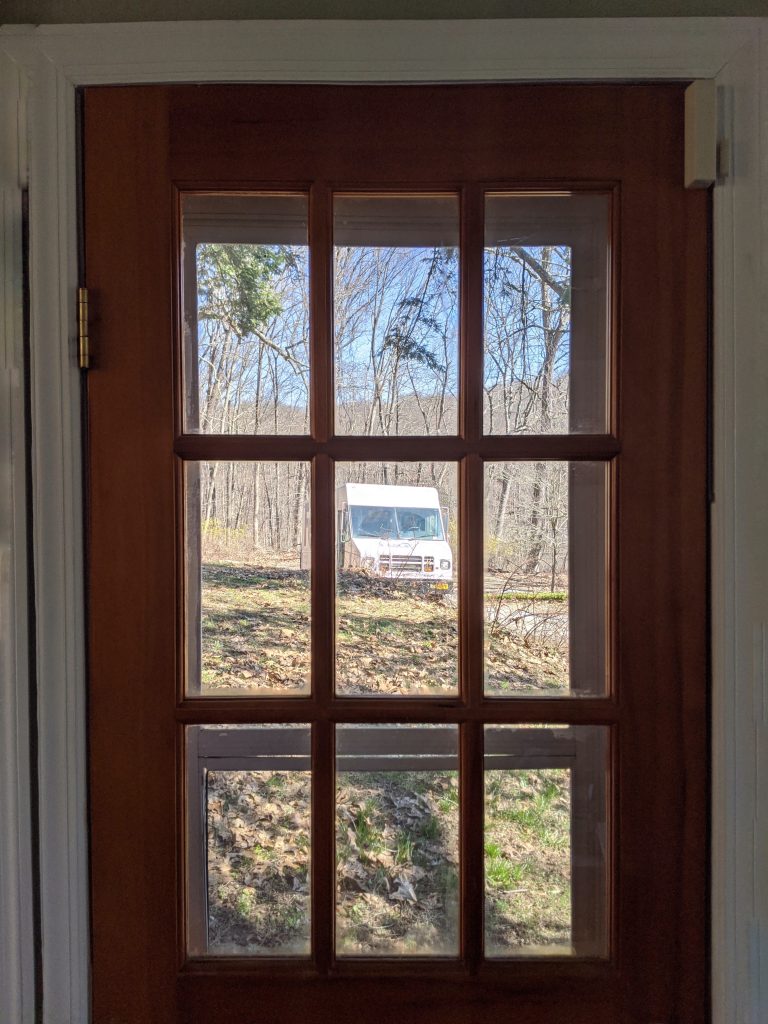
Or here’s a shot a friend sent me from the normally hectic Mumbai:
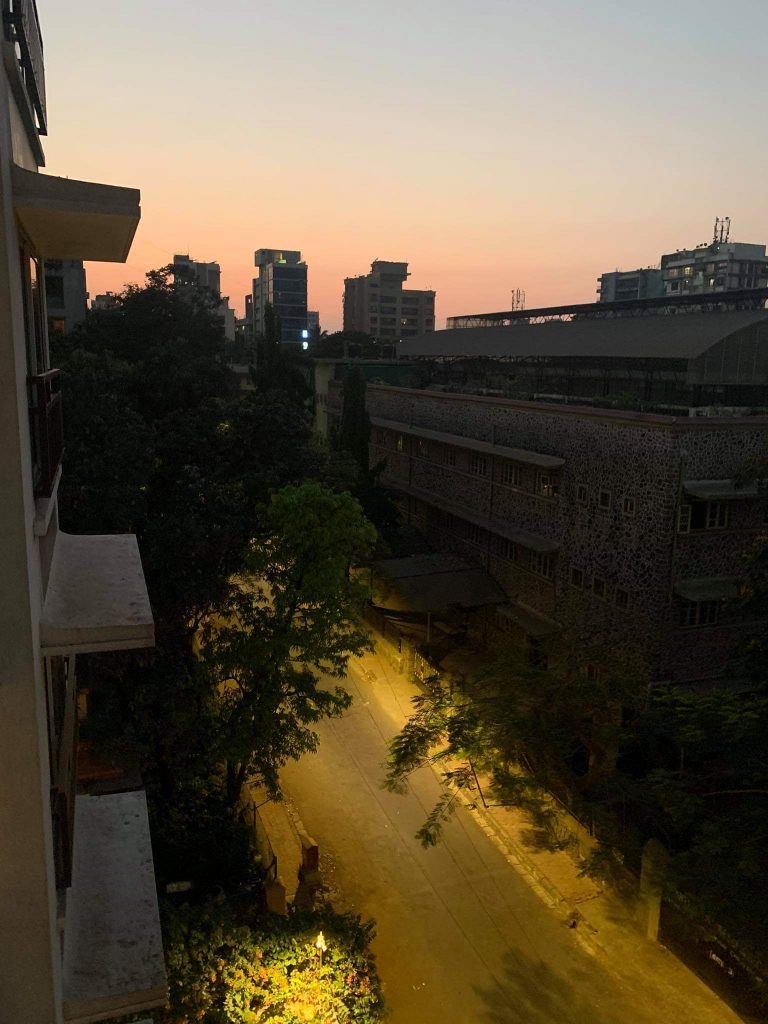
What do you see from your window? And what story does it tell?
Depth of Field
“Depth of field” refers to how much of a photo is in focus, or, to look at it the other way around, how much is nicely blurred. Normally this effect comes from the combination of a large sensor, a fast lens, and a telephoto focal length, and you don’t get those on a phone.
But there are two ways you can still get good depth of field.
“Portrait mode” on most modern phones mimics depth of field. For instance, here’s a shot I took with a Google Pixel 3 of the nascent spring, using portrait mode to blur the background and highlight the flowers:

Without the blurring the flowers don’t stand out as much:

So don’t think that portrait mode is limited to portraits.
Additionally, even a phone will blur the background if you are close enough. (Look carefully at the second photo above and you’ll still see some blurring.)
Similarly, the next two shots (still with a phone, and still without portrait mode) show, respectively, some blurring and lots of blurring, because in the second I got even closer to the piano keys:
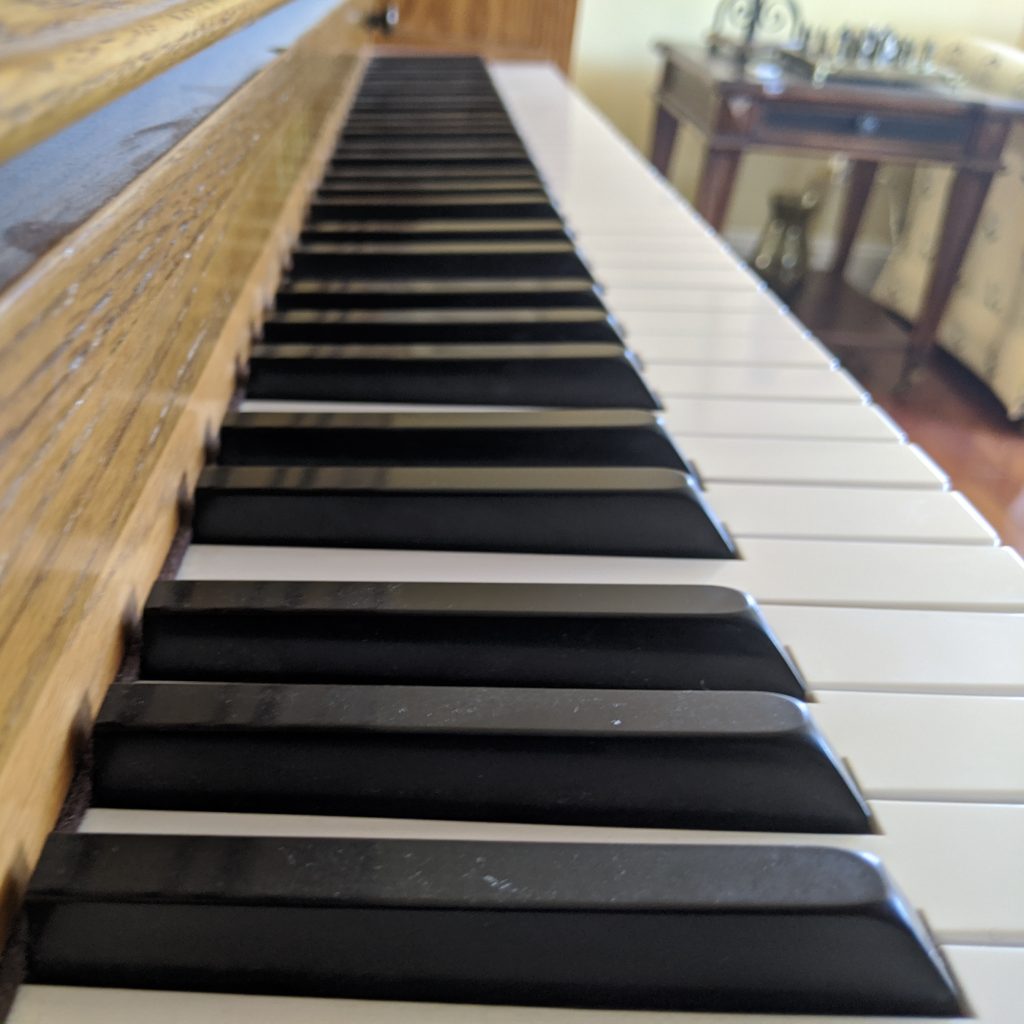
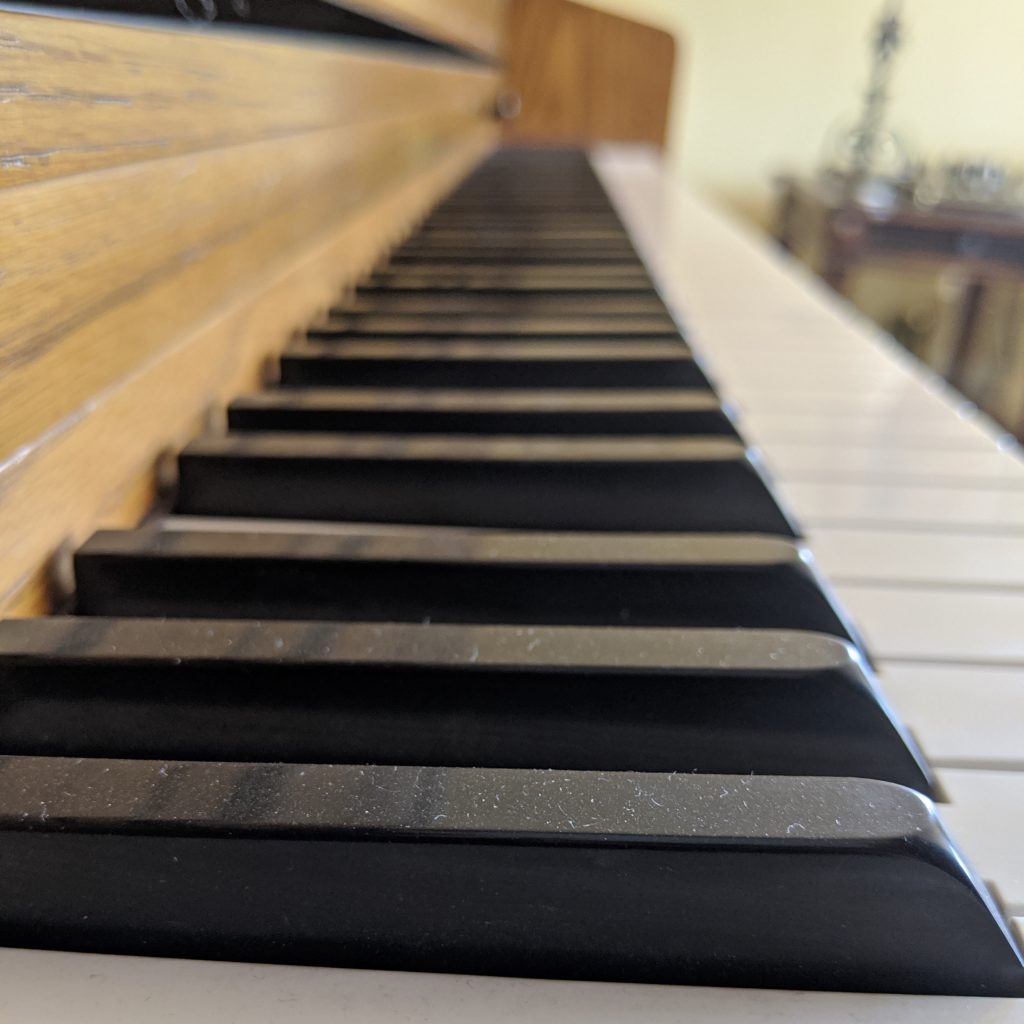
So take your shots from close up and from far away, with and without portrait mode.
Or if you have a camera that lets you, change the aperture and see what you can do with depth of field.
Either way, you might breathe new life into mundane subjects.
Post Processing
Post processing isn’t for everyone, but especially if you find yourself at home, it’s a great time to play around — either with a shot you just took, or something from when you could leave the house.
On a phone, take a look at “Snapseed” (Android / iOS). It’s a free, powerful, and fun editing app.
On a computer, Lightroom is the most popular option, along with its more powerful cousin, Photoshop. (You can get these for phones, too.) GIMP is a free alternative you might consider.
Once you’ve got the software, explore your options.
For instance, here’s a nicely framed shot of an abandoned bus:

Captured with a Fuji X-T1, it jumps to life on a phone with the click of a button (“grunge”) in Snapseed:
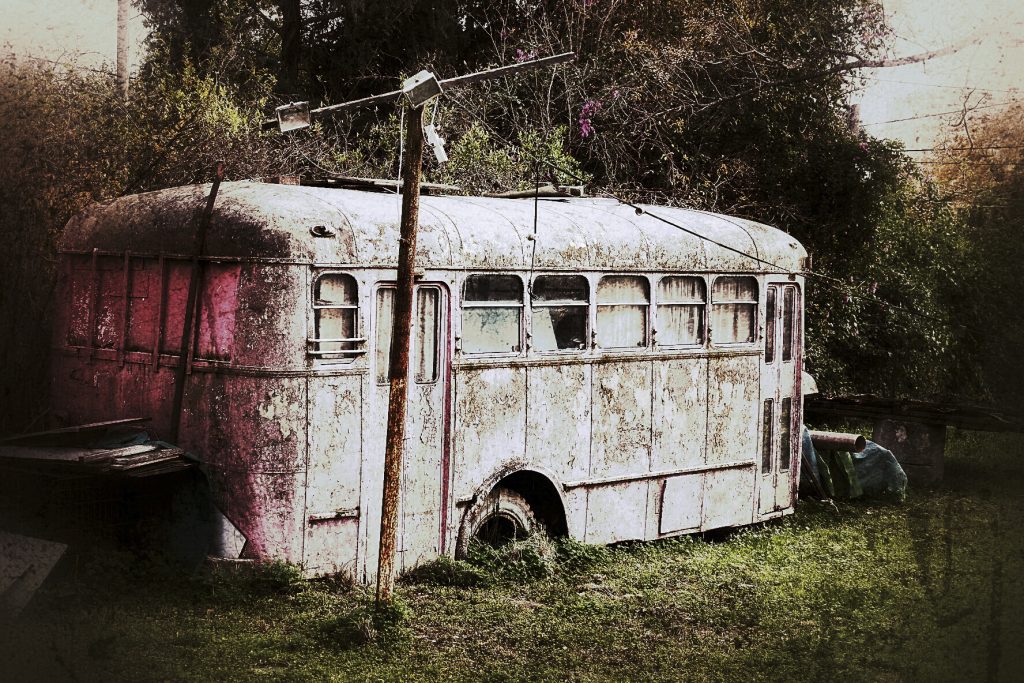
Or here’s a shot I staged and then edited to look old-fashioned:
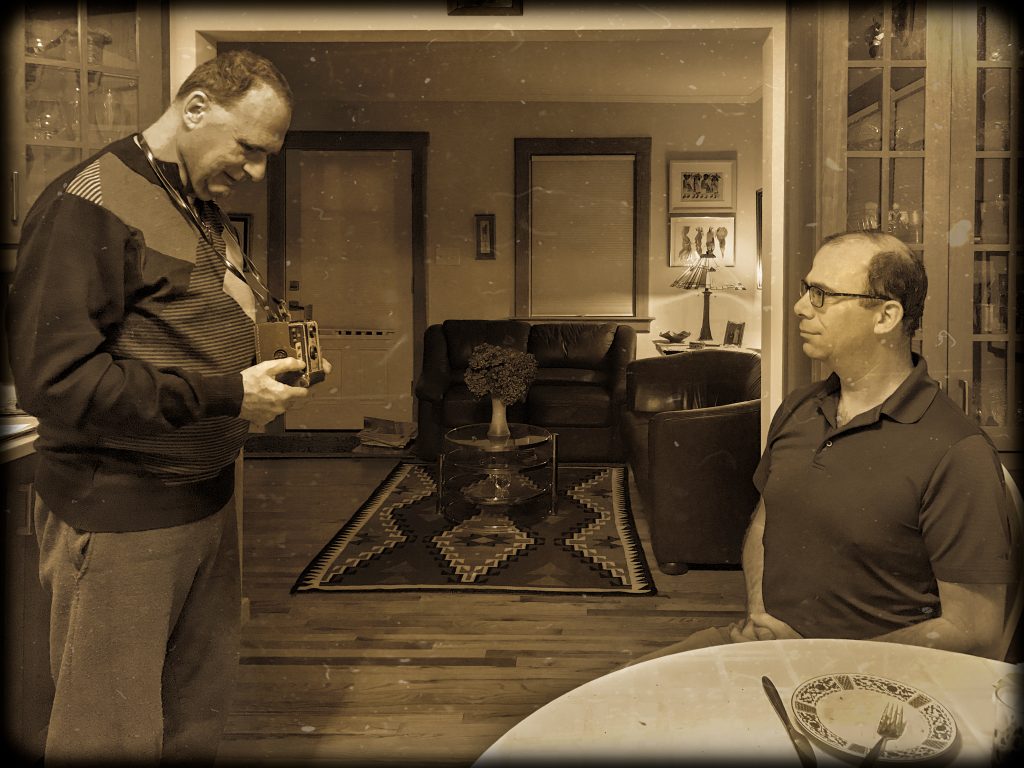
The image is from an iPhone, edited in Lightroom and Photoshop.
Put Them All Together
Once you’ve experimented with some of these ideas, try combining them, editing a selfie, say, or creating a still-life with a blurred background. Then post your results!
Because all in all, you’ve got plenty to photograph right there at home.




